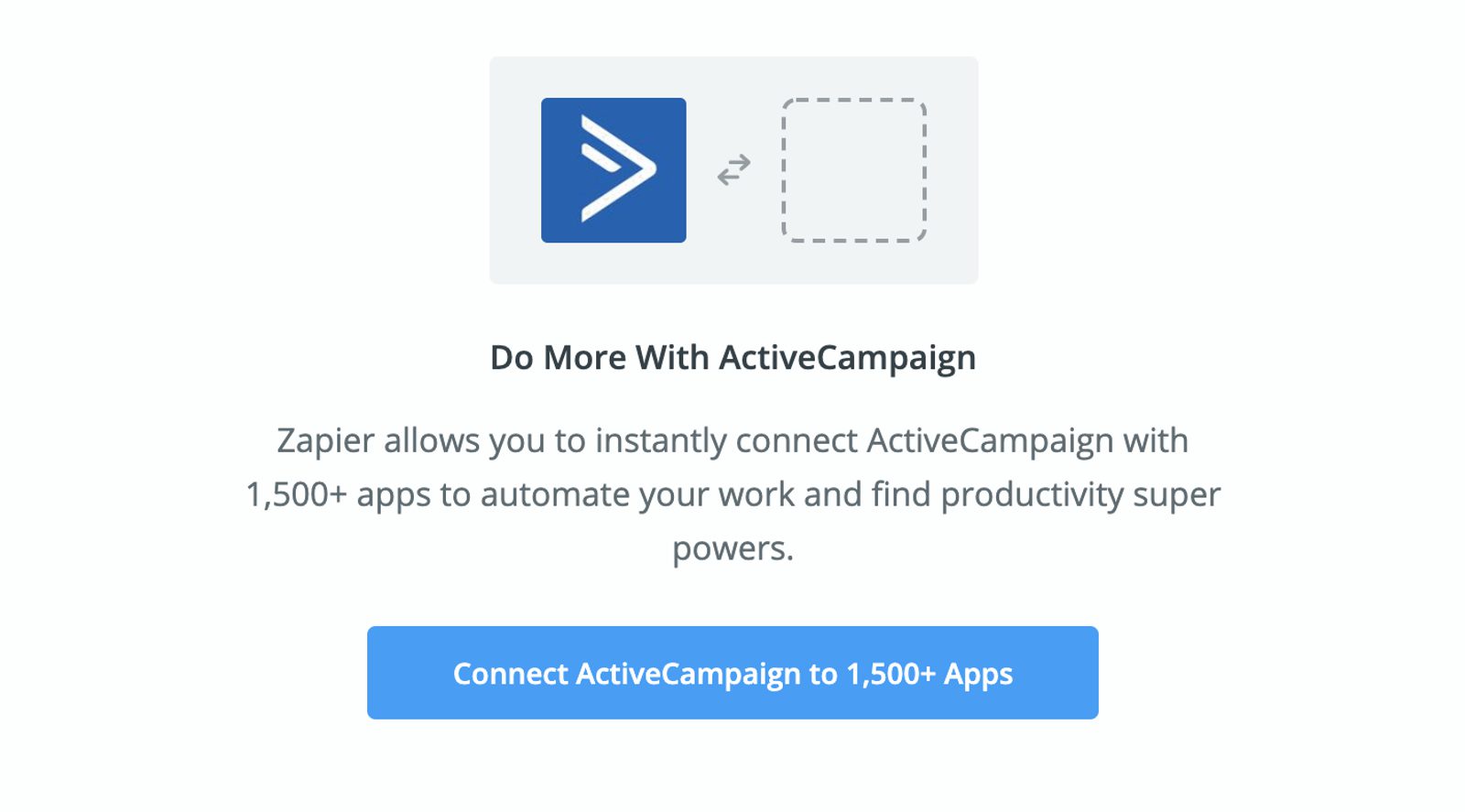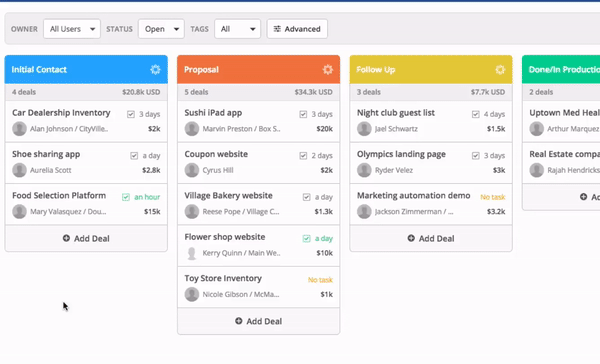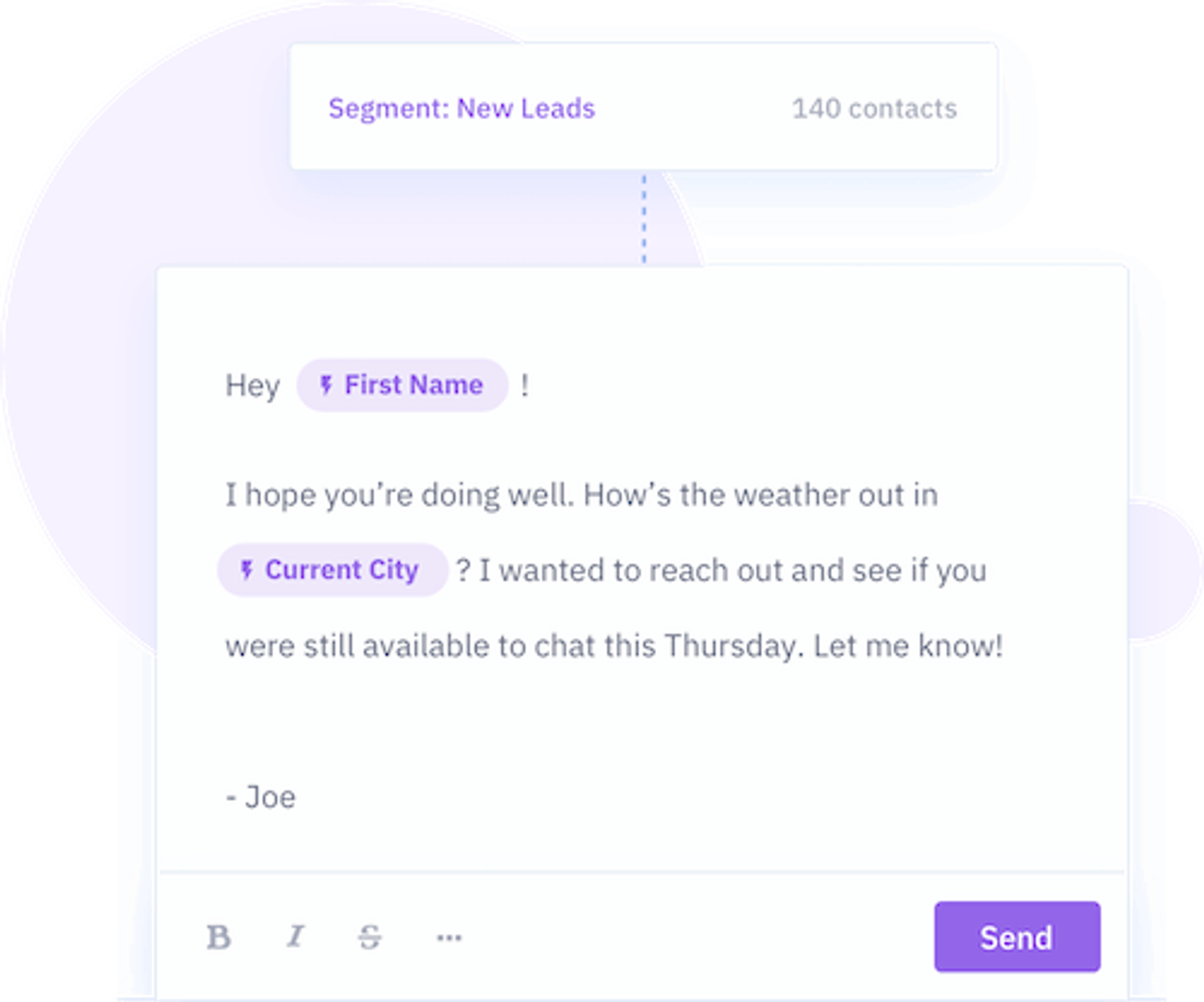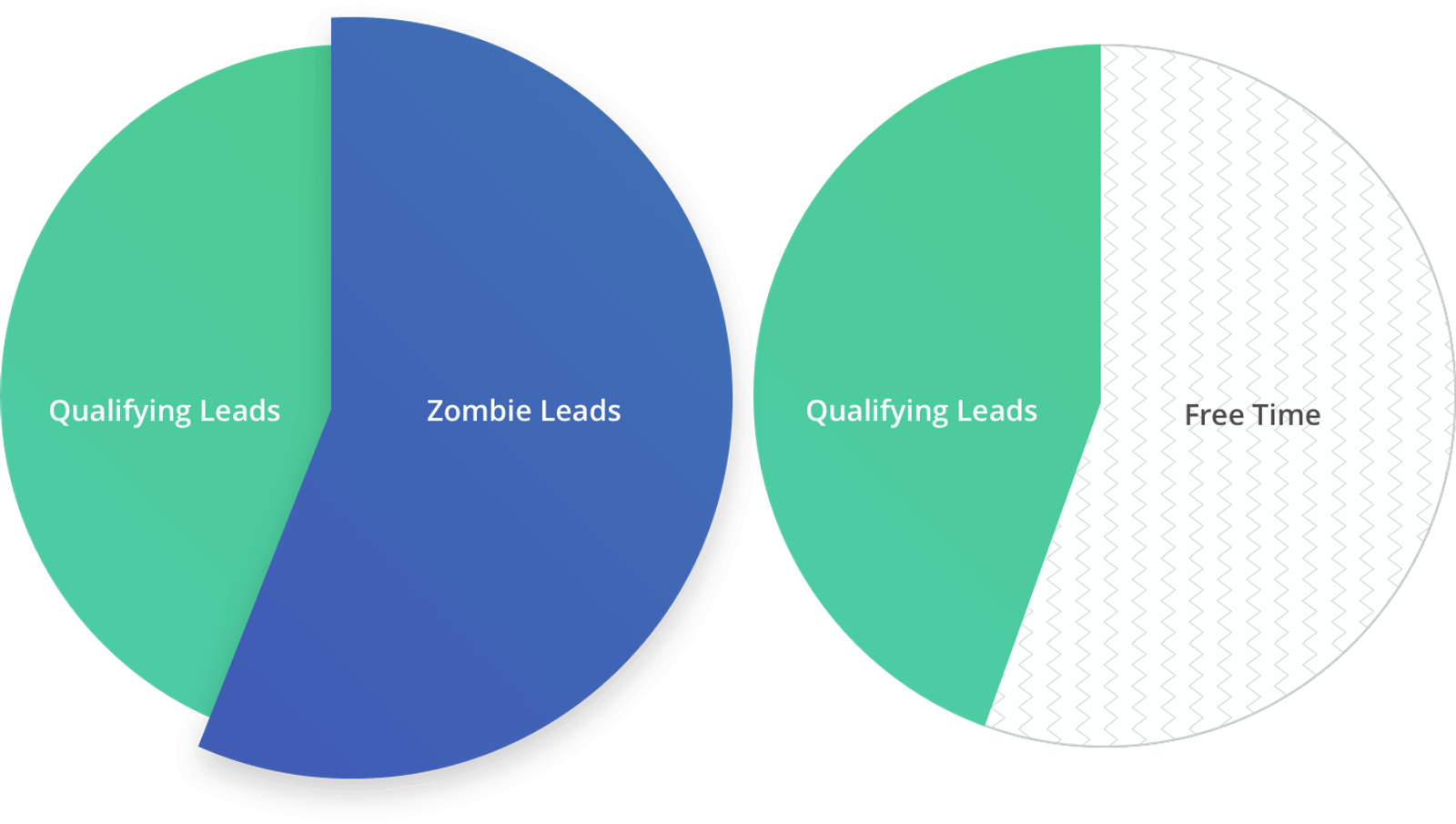Up to 69% of CRM implementation fails because not enough planning and effort goes into the process.
Time is a scarce resource for small businesses, and using a new CRM can seem scary.
- How long will it take to set up new CRM software?
- Will the CRM create more work for my teams once in place?
- Will it take forever to learn how to use the new system?
- How much of my day will I have to spend managing my CRM?
Who has the time? It might seem too overwhelming or time-consuming.
But do it the right way the first time, and it’ll all be worth it. You’ll save hundreds of hours later on.
If you don’t put in the time and effort for implementation, your CRM software won’t be able to save you time down the line.
In this article, we’ll cover:
- How long it takes to set up a CRM
- Why “CRM takes up too much time” is a myth
- How a CRM can save you hours each week
The clock’s ticking — let’s get started!
How long does it take to set up a CRM?
CRM setup can take anywhere from one week to one year. CRM setup time depends on how much data you need to migrate from your existing CRM, how big your team is, who needs access to your CRM, and how complicated you want your CRM automation to be.
Some CRM platforms, like ActiveCampaign, will migrate your CRM data for free — that means fast setup for you!
One year sounds like a long time. And it is!
But if you cut corners now, you might end up in a sticky situation later on:
- Your sales and marketing reporting is inaccurate
- Your leads fall through the cracks
- You waste time hunting down information that should be at your fingertips
So how can you figure out how long setting up a CRM will take for your business?
The CRM implementation process has 5 steps:
- Figure out what you need from your CRM
- Clean your data
- Migrate your data into your CRM
- Set up automations and integrations
- Train your team
How long each step takes depends on a variety of factors, including:
- How organized and clean your current data is
- The number of stakeholders involved in implementation
- Company size and number of CRM users
- The number of contacts and automations you need to transfer
- The number of integrations you need to set up
- Whether or not you currently have naming conventions, taxonomy, and data processes in place
Let’s dive into each step in more detail.
(Quick note: The time estimates given are just that — estimates. Any step involving your data can take much longer if you run into data handling or quality issues.)
Step 1: Figure out what you need from your CRM
What gaps do you need your CRM software to fill? This might look like:
- Your marketing team doesn’t know what kinds of prospects to target
- Your sales team doesn’t have the information and tools they need to convert leads from marketing
- Leads take forever to close – or always stall at the same place in your sales cycle
- Customers churn after just a few months
- Marketing, sales, and customer support work in silos without clear communication
With these gaps in mind, you can create a feature wishlist and set your CRM goals.
If you don’t know what you need from CRM, get your stakeholders in a room.
These stakeholders should include management from:
- Sales
- Marketing
- Customer support
What problems does each team deal with? By the end of the meeting, you should have a list of things you want your CRM to help with.
Now you’re ready to find CRM software with features that solve those problems.
Estimated time for your CRM needs analysis: Two to four weeks.
Step 2: Clean your data
Sales and marketing departments lose approximately 550 hours per year because of bad data.
Don’t let that happen to you — clean up your data before it goes into your CRM!
As technical as ‘data cleaning’ might sound, it really just means:
- Making sure your data is accurate and organized now
- Not having to deal with inaccurate or missing data later
If you’re a brand new business, this won’t take long at all. Since you don’t have much data to clean, figure out what kind of data you want to collect via CRM. What do you want to know about your contacts and their interactions with your company?
If you do have a whole bunch of data to clean, it’s time to take stock of:
- Where you store data
- How data gets into your system
- How accurate your data is
Here’s how to audit your data:
- Locate and gather all of your customer information
- Organize the information according to your needs
- Prioritize the customer information by value to your business
- Remove any duplicate and incorrect information
- Add any information that is missing
- Create a uniform system for data entry
- Repeat the audit process at least once a year
Estimated time to clean up your data: 1 week to a year — the more data you have, the longer it will take to clean.
Migrating clean data into your new CRM system can save you hundreds of hours of dealing with messy (inaccurate) data later on.

Did you know that OutKast is singing about cleaning their data in this song? So fresh and so clean, clean. (via Tenor)
Step 3: Migrate your data into your CRM
Some CRM providers help you migrate your data — or even do it for you. ActiveCampaign offers migration services to help you get everything you need into your new CRM:
- Subscriber lists
- Contact information
- Tags
- Custom fields
- Marketing automations
- Email campaigns
- Email templates
- Opt-in forms
- Automation workflows
Speaking of custom fields, use them! They keep your data organized and accessible in your new CRM. Staying organized keeps things moving along quickly (a theme that you’ve probably noticed by now).
Custom fields make it easier (and faster) for your sales and marketing teams to adapt to new CRM software. Using the same naming conventions and field names that your team is used to makes for a smoother transition, whether you’re new to CRM or migrating from an outdated platform.
Estimated time for migrating your data: A manual migration can take anywhere from one to three months. Migration services can take up to a month. The more data you have, the longer this takes.
Step 4: Set up automations and integrations
Every CRM system has different integration capabilities. For the smoothest transition possible, make sure your new CRM software works with your other sales and marketing tools. Often, this involves integrating each tool with your CRM.
How long each of these integrations takes depends on what type of integration you need: direct/native, third-party, or custom.
Direct/native integrations take the least amount of time. These connections have been pre-built by the company who built your CRM or other tools. You can use these integrations from within your CRM, often just by linking your accounts.
ActiveCampaign’s app library contains over 250 apps, making it easy to use the tools you love alongside the Deals CRM.
Third-party integrations connect two tools by way of middleware.

Third-party integrations like Zapier bridges the gap between two applications that otherwise wouldn’t be able to communicate.
These take a little bit more time than direct integrations — you need to tell the middleware what to do with the information it gets from each platform — but a lot of the backend work is already done for you.
Custom API integrations take the most amount of time. You need to have someone who can build this integration from scratch based on their technical knowledge of both your CRM software and the tool you’d like to integrate with.
In addition to setting up integrations, take the time now to automate how your CRM shares and receives data. Doing this upfront can save you up to 23% of your day later on.
By automating the way your CRM records and shares data, you can see how your contacts:
- Engage with your marketing
- Move through the sales cycle
- Convert (or don’t) into customers
- Interact with your customer support team
- Much more!
Estimated time for native or third-party integrations: One hour to a few days. The more integrations you need, the longer this will take.
Estimated time for custom integrations: One week to a few months, depending on how complex the integration is to build.
Step 5: Train your team
55% of sales reps think ease-of-use is the most important CRM feature. And if they don’t find them easy to use, they just won’t use them: 79% of opportunity-related data gathered by sales reps never gets entered into their CRM software.
Why? Are CRMs really that hard to use? Well, some of them are. But what makes an even bigger difference is CRM training. Give your sales and marketing teams ample time and resources to get comfortable with how they’ll be using the new software specific to their roles.
Teaching best practices up front softens the learning curve and saves time for sales and marketing teams who will be using the CRM system every day.
Before you start using the new CRM, figure out how you’ll deal with:
- Naming conventions
- Taxonomy
- Duplicate data
- Missing data
- Unknown data scenarios
Build out documentation and user guides for your new software. If your CRM software offers one-one-one trainings or office hours, take advantage of those resources.
Estimated time to train your team: Half a day to one day per employee.
Myth: Using CRM software takes up too much time
You can choose the best, most efficient CRM software in the world – but if your team won’t use it, that’s time and money wasted.
The biggest complaint from sales teams against CRM? Data entry takes up too much time.
But if you set up your CRM the right way, using it is easy:
- When you have clean data and clear processes for data formatting and maintaining contact information, everything stays organized and easy to find at a moment’s notice
- When you train your sales team and give them the resources they need to use the CRM software efficiently, you get their buy-in and they feel confident using the tool
- When you make CRM part of the daily routine by building it into every sales and marketing process, using it becomes second nature
Pop quiz: Which option takes less time?
A: Manually entering customer info into a spreadsheet
B: Your CRM automatically pulling it into the deal info
A: Writing a to-do list
B: Receiving automatic task assignments
A: Emailing each contact manually
B: Sending automatic follow-ups and nurture campaigns
A: Guesstimating whether a lead is qualified
B: Using an automatic lead scoring system that takes the guesswork out of it
A: Scribbling notes from each sales call for your customer support team to decipher later
B: Entering notes into a central database, available to everyone
If you answered B to all of the above, you’re right! It’s no coincidence that you can use your CRM system for each of those time-savers.
CRM apps can increase sales productivity by up to 34%. The learning curve can be steep — although a strategic implementation process softens it — but the results are more than worth it and can save your sales team tons of time.

Consider this CRM myth busted! (via GIPHY)
How CRM can save you hours each week
Here are 5 ways your CRM can save you hours each week, making the time you spent on implementation more than worth it.
Make sure everyone has the information they need
A CRM tracks all contact information and interactions within each deal — no more running around before a sales call trying to figure out who knows what about each lead.
Putting universal standards in place for CRM data entry helps improve processes within teams, too. CRM adoption increases the quality of communication between sales reps and managers by 56.9% — meaning less time spent on misunderstandings and more time spent selling.
Take the busy work off your plate
With the right CRM system in place, sales managers won’t have to manually assign tasks to their teams (or nag them to get it done). Set up sales automations that automatically assign tasks to follow up with a contact or move a lead to a new stage.

When a lead’s deal value exceeds $500, this automation assigns the deal owner a task to call the customer — no manager interference needed.
You can trigger task assignments based on:
- Contact behavior
- Lead score
- Deal value
Your CRM can also save your sales teams tons of time by automating lead distribution. No more fighting over leads or arguing about who’s next on the round robin spreadsheet. Automatically assign leads to different salespeople based on:
- Territory
- Lead score
- Deal value
- Industry
- And more!
This video is "Automate That!" a segment of “Growth Decoded” a show that investigates the relationship between the customer experience and business growth — one topic at a time. Register here and never miss an episode!
Get “stuck” leads to keep moving
A CRM tracks your entire sales process in one place. This gives you a bird’s-eye view of your sales cycle, letting you pinpoint exactly which areas need help.

The ActiveCampaign Deals CRM lets you view your entire sales pipeline, move deals from one stage to another, email individual contacts, track every interaction with a contact, and much more.
Run Sales Performance Reports to figure out where deals are stalling. These reports help identify which pipelines, stages, or even salespeople are holding things up. The sooner you can figure out what needs fixing, the faster you can fix it.
Create campaigns that make every message personal
A CRM with marketing automation makes it easy to personalize each communication with your contacts without spending hours crafting the perfect email. In ActiveCampaign, Saved Responses make it easy to create and personalize all the different types of one-on-one messages you send most often.

ActiveCampaign’s Saved Responses feature lets you add personal touches to your most-sent emails.
For example, Dawn Manske uses ActiveCampaign to personalize the volunteer pipeline for her social enterprise, Made for Freedom. Here’s what her pipeline looks like:
- Potential volunteers sign up on a landing page
- ActiveCampaign automatically emails the potential volunteer with available options
- Dawn follows up using personalized Saved Responses based on the volunteer’s interests
- Depending on the volunteer’s response, Dawn may follow up with a phone call
- Dawn enters all relevant information into ActiveCampaign’s CRM to use later

Dawn uses ActiveCampaign automation to build her volunteer network around the world.
Prioritize more qualified leads to close deals more quickly
Your CRM software collects customer info that helps identify what makes a lead qualified.
Use lead scoring and win probability to figure out which leads your sales team should prioritize, which to nurture, and which to leave alone to self-close.
This video is "Automate That!" a segment of “Growth Decoded” — a show that investigates the relationship between the customer experience and business growth — one topic at a time. Register here and never miss an episode!
Photographer Heather Read saves 10 hours a week by only focusing on qualified leads instead of what she calls “zombie leads.” She uses ActiveCampaign automations to bring in leads who opt-in to a content download, then automates follow-up emails to save even more time.

By focusing only on qualified leads, Heather gets back the time previously spent on zombie leads.
Take time for CRM setup now, save time later
Now you know how much a CRM can save you time and make your life easier. But first, you have to be willing to take the time to set up your CRM system.
If your business is brand new, this won’t take more than a few weeks. If you have a ton of data, it could take up to a year. Either way, it’ll pay off tenfold in time savings down the line.

By ball, we mean close deals. Lots of deals. (via Tenor)








